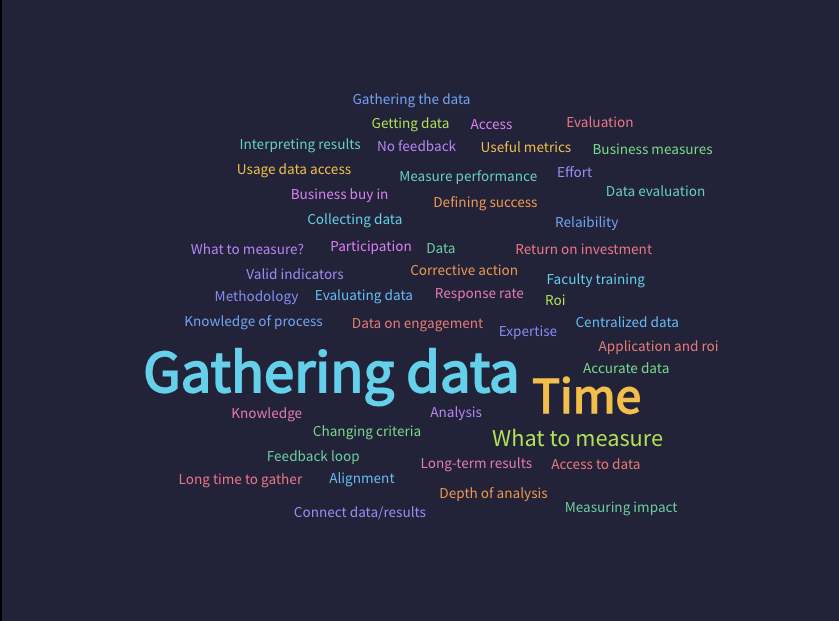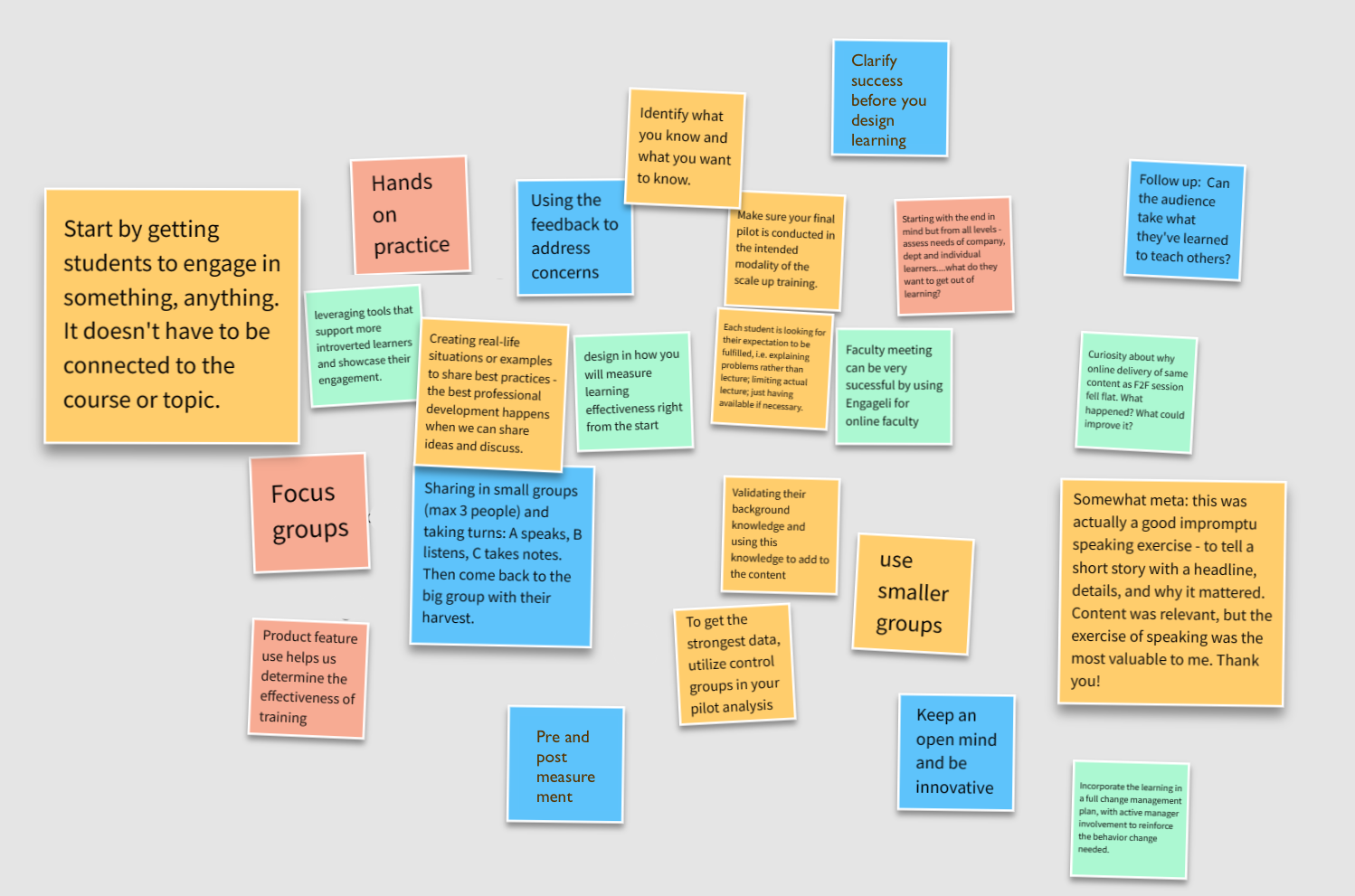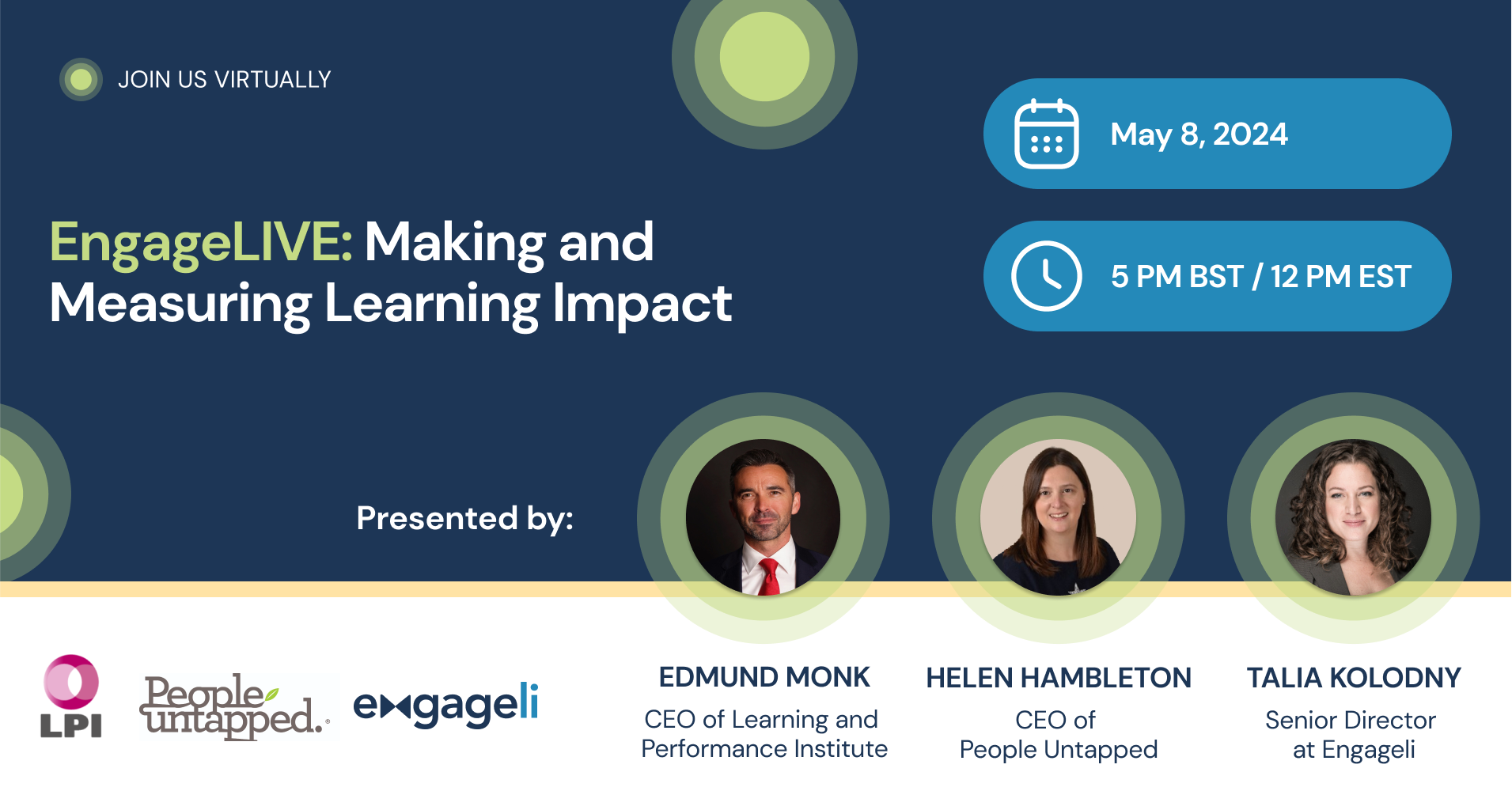Start with the end in mind
The key question guiding learning leaders should be “what are we trying to achieve with learning?”. Defining clear learning objectives and outcomes from the outset is the key to finding the right metrics. The vision of impact will lead to the right evaluation plan. There is no "one size fits all" metric, as goals and strategy vary. The power of active learning
Extensive research has already shown the power of active learning. Today, intentional technology is enabling the evidence-based approach, at scale. Engageli’s impact study has shown 10X enhanced engagement in an active learning session as compared to a lecture. However, transitioning to this model can be challenging and requires effort.Challenge the convenience norm
In an era where convenience is often prioritized, it’s crucial to balance it with efficacy. Learning experiences need to be engaging and substantial, not just easy and quick. There are common misconceptions around micro-learning, as learning takes time and effort. An example shared described a client asking for a 15-minute session on collaboration - a mission impossible from the learning impact perspective. With resources stretched thin, learning leaders are tasked with creating impactful, concise educational experiences and achieving results with less resources. This challenge requires a shift in strategy and skills.
A visual representation of the challenges brought up by more than 100 learning leaders who attended live.
The golden hour for learning leaders
88% of participants in the live session indicated they are dissatisfied with their current tools and ability to measure learning impact. This large majority emphasizes the opportunity at hand. The top engagement metrics chosen by participants as meaningful for them were multi-modal engagement (engaging in more than one way in the classroom) as well as asking and answering questions. These “softer” aspects can now be effectively tracked and measured with the right tools, ones that were designed for learning and teaching.Leverage data to drive learning and business outcomes
In the recent LPI report, more than half of L&D managers said they don’t know whether their learning programs are effective. This is a challenge that should be solved with meaningful metrics and reliable data. Learning professionals need to move away from vanity metrics such as the number of clicks into a URL. They should shift to meaningful, intentional metrics that align with business strategy. The technology you choose should allow you the flexibility to design the metrics that will serve your purpose.Crowdsourced strategies for engagement and impact
Over 100 learning leaders and educators shared a wealth of strategies focusing on engagement, learning content, practical application, continuous assessment, and innovation. These were shared in group discussions as well as collaborative documents. Key themes included introducing real-life scenarios and problem sets, promoting hands-on activities, and implementing rigorous feedback and assessment mechanisms to refine and scale learning initiatives and training programs effectively.Collaborative insights - key themes:
Learner Engagement Strategies
- Initiating learner participation through a variety of activities to spark interest.
- Utilizing small group discussions where participants take turns speaking, listening, and note-taking, enhancing collaboration and deeper processing of information.
- Emphasizing real-life scenarios, case studies and examples.
- Encouraging hands-on practice and active learning strategies to solidify understanding and skills.
- Encouraging participants to share what they've learned with others, fostering a culture of knowledge dissemination and peer teaching.
Data, Feedback and Assessment
- Using feedback constructively to address concerns and improve the learning experience.
- Identifying why certain approaches may fail and exploring improvements.
- Implementing pre and post assessments that match the learning objectives.
- Designing programs with a clear framework to measure the impact of learning.
- Using control groups to gather strong, reliable data.
Innovation and Scalability
- Keeping an open mind and being innovative to adapt teaching methods and content delivery.
- Planning for scalability by conducting pilot sessions that mirror the intended full-scale implementation.

To experience this EngagLIVE asynchronously, use the following link.
Join Us Next Time! Stay informed about our next events and gain more insights by signing up for our newsletter.

